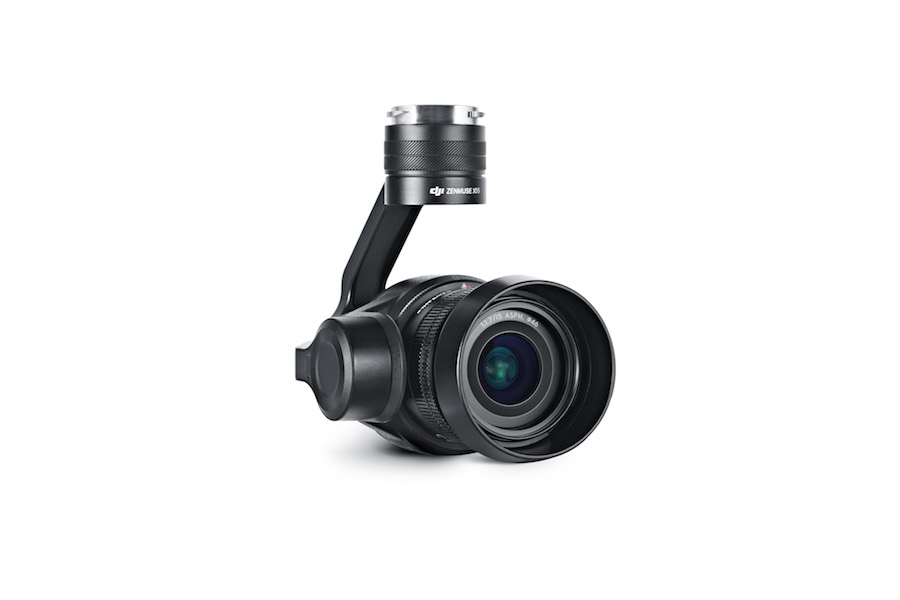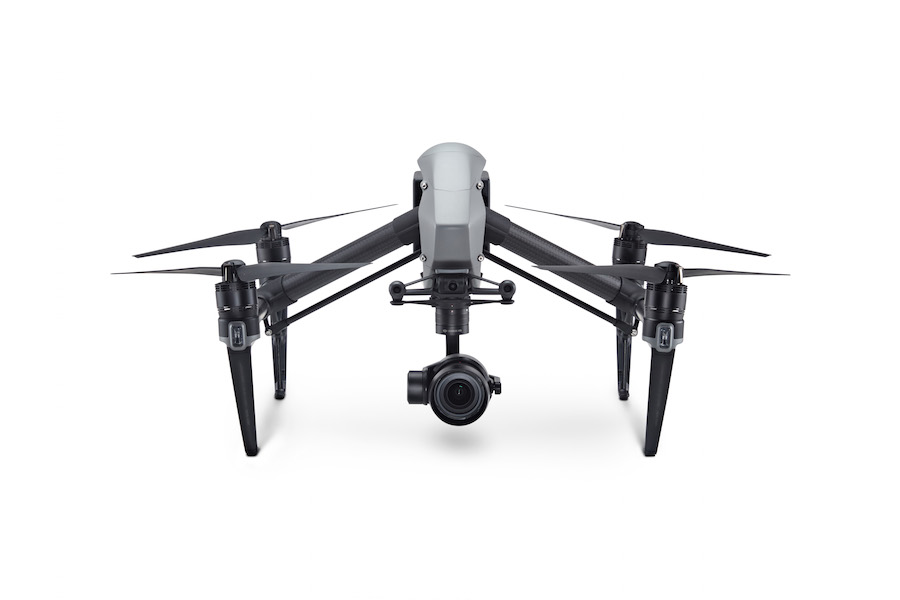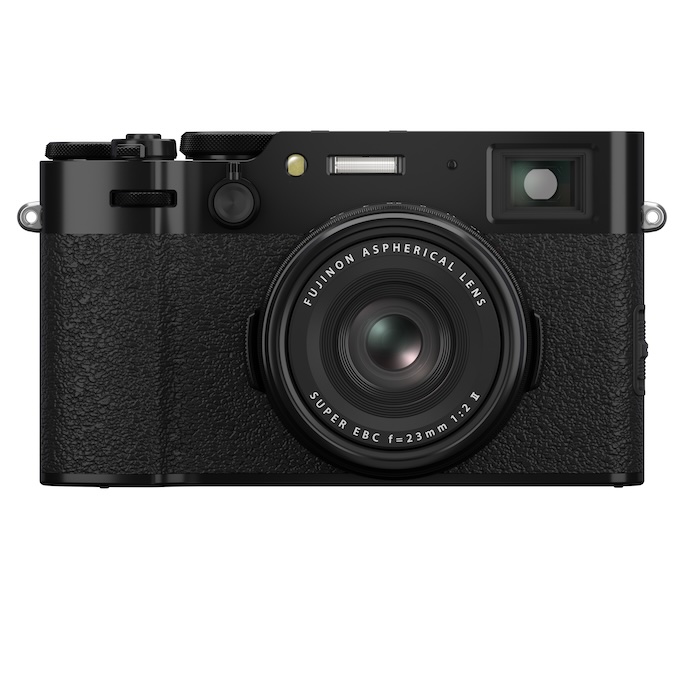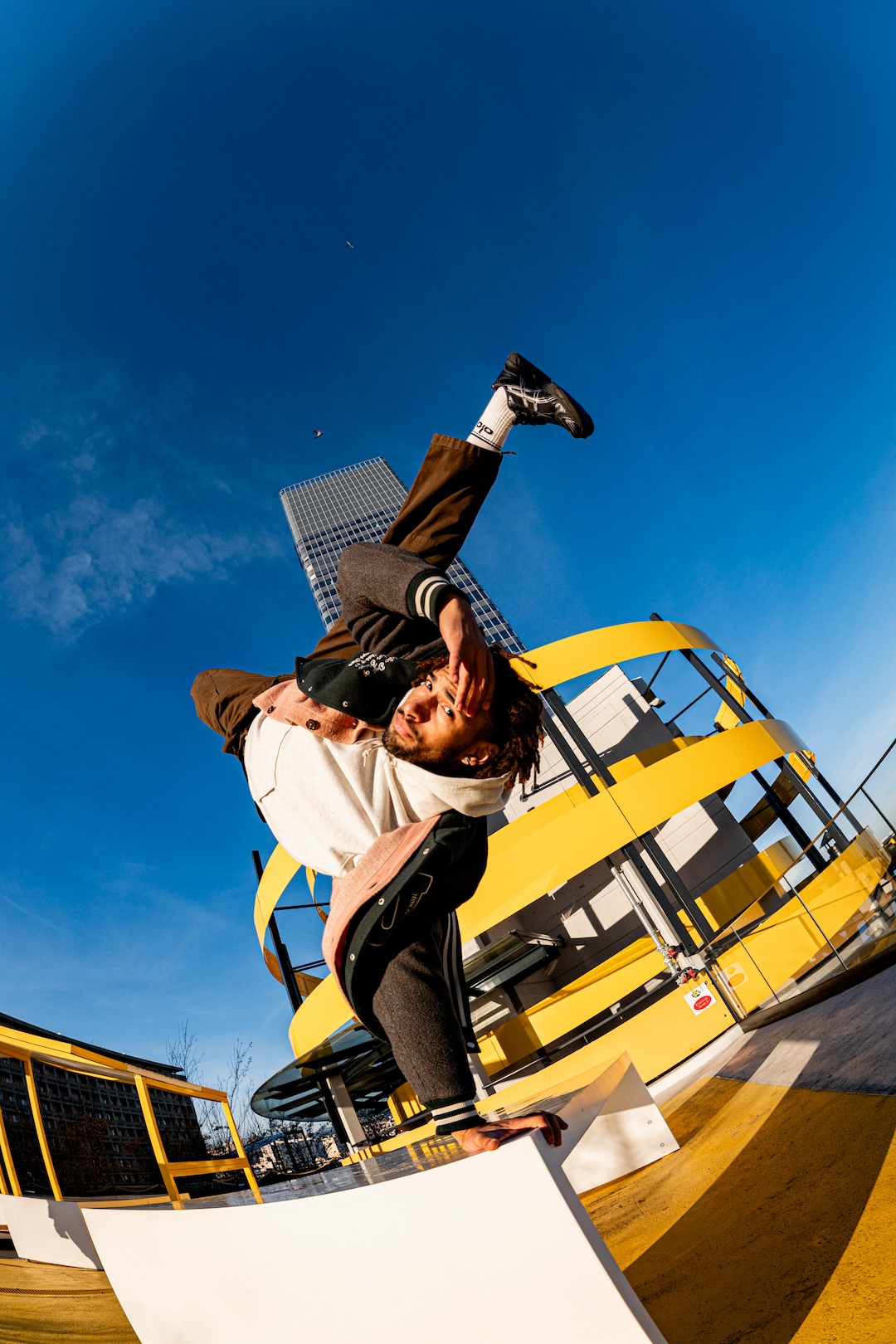Few companies have done as much to popularize drone filmmaking as DJI. Now, they’re poised to ship an update of their more advanced flying camera, the Inspire 2.

With the new Inspire 2, DJI is delivering a substantial upgrade to the original with a new, lighter magnesium-aluminum alloy body that the company says increases stiffness while lowering weight. The craft has a dual battery system that powers up to 27 minutes of flight time. If one battery fails, the other will ensure that the Inspire can return to home safely.
The Inspire 2 now has two cameras–one front-facing camera to feed the drone pilot a visual of the flight and a second Zenmuse camera on a gimbal for recording stills and video.
For the main camera, you’ll have a choice of the new X4S or X5S interchangeable cameras. Both models support very high quality video recording thanks to a new image processing system built into the airframe. The X5S can capture up to 5.2K video at 4.2Gbps in the CinemaDNG format and footage is saved to SSD memory. You can also record Apple ProRes (422 HQ and 4444 XQ), H.264 and the new H.265 codec. When recording 4K video in H.264 and H.265, the bitrate is up to 100Mbps.

Zenmuse X5S
The X5S sports a 20-megapixel Micro Four Thirds sensor with 12.8 stops of dynamic range. It accepts eight different interchangeable lenses and can burst at up to 20fps when shooting RAW (DNG) still images.
The X4S camera will record 4K video at up to 60fps using either H.264 or H.265. It has a fixed 24mm equivalent lens with aperture control (f/2.8-11) and a mechanical shutter. It also features a 1-inch, 20-megapixel sensor with up to 11.6 stops of dynamic range.
DJI plans an OSMO-style hand stabilizer for both of these new cameras in the future, though a specific launch date wasn’t announced.
The Inspire 2 is zippy. You’ll be able to hit a top speed of 67 mph and accelerate to 50 mph in four seconds (so please, be careful). It can also fly up to 16,404 in the air with optional, high altitude propellers (so again, please be careful).
The Inspire 2 will also gain a series of intelligent flying modes similar to those rolled out for the Phantom 4. A Spotlight Pro Mode locks onto a subject during flight while the aircraft flies in another direction and can automatically rotate the drone to stay locked if the gimbal hits its rotational limit. A TapFly mode lets you tap a location on your display and have the Inspire 2 fly to that point while avoiding obstacles that may be in its path. Finally, an ActiveTrack mode can recognize common subjects (people, cars and animals) and instruct the drone to follow behind, lead in front, circle above or track alongside while always flying forward–again, avoiding obstacles along the way.
DJI is rolling out a series of accessories for the Inspire 2, including a follow focus system, battery charging station, SSD memory and reader and a high-brightness IPS monitor that will be sold in 5.5-inch and 7.85-inch sizes. The monitors will feature a pair of microSD card slots to backup footage and can operate in temperatures ranging from -4 to 104 degrees Fahrenheit.
The Inspire 2 aircraft (without a camera) will sell for $2,999. A combo that includes one Inspire 2, the Zenmuse X5S and a CinemaDNG and Apple ProRes License Key will set you back $6,198 (or, if you order before January, you’ll pay $5,999). The combo will ship first, in December, with Inspire 2 drone shipments beginning in January.
Don’t Miss: What Drone Photographers Need to Know Now





